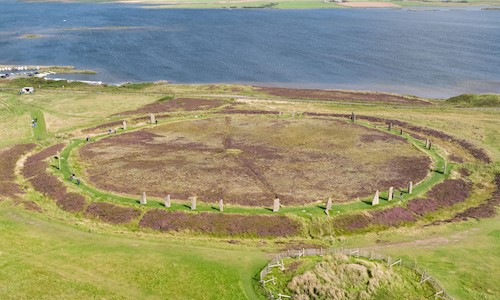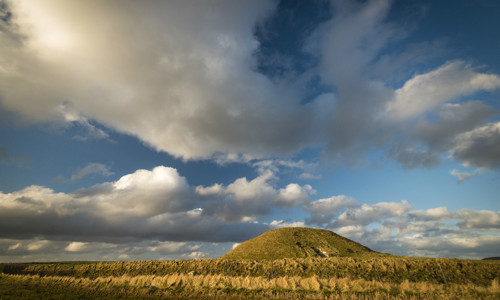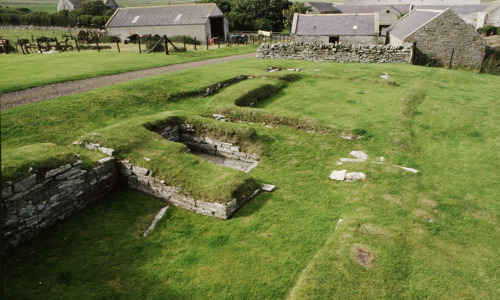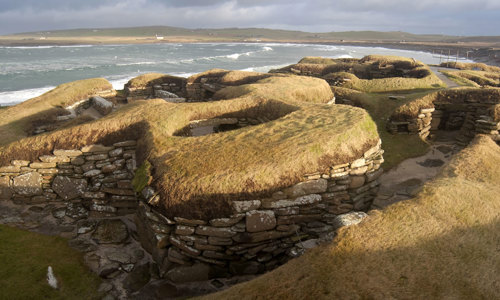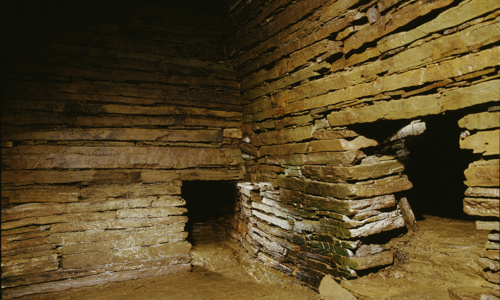History
There’s been limited archaeological investigations at the Ring of Brodgar, so we don’t know its age for sure. In the absence of scientific dates, our best guess is that the main ring was constructed sometime between 2600 and 2400 BC. The surrounding burial mounds and stone setting likely date from between 2500 and 1500 BC.
Scheduled in 1882, it was one of the first places to be protected as a site of historical significance in the British Isles.
Ceremonial centre
The Ring of Brodgar may have been involved in ceremonies celebrating the relationship between living and past communities. It’s also been suggested that the sites in the surrounding area were used for observations of the moon from the Ring of Brodgar, though there’s scant evidence for the activities Neolithic people did at the site, or why.
It’s easy to see why Orkney’s Neolithic inhabitants might have set up a ceremonial circle on this spot – surrounded by hills and lochs, the site has a truly spectacular setting. Standing in its centre gives the sense of being in a natural amphitheatre.
Standing tall
Unusually, the ring has a truly circular layout. Of the original 60 stones, 36 survive, ranging between 2.1m to 4.7m tall. The stone circle has a diameter of 104m, and is encircled by a rock-cut ditch, or henge, measuring 136m across, making it one of the largest and finest stone circles in the British isles.
The erecting of the stones and construction of the massive rock-cut ditch would have required considerable labour and organisation.
The Heart of Neolithic Orkney
The Ring of Brodgar is part of the Heart of Neolithic Orkney World Heritage Site. Along with the Ring of Brodgar and its adjacent stones and burial mounds, the site includes:
The other three monuments were built before the first half of the 3rd millennium BC. The Ring of Brodgar was built about 500 years later.
The architectural achievements of Orkney’s Neolithic population speak of an early and sophisticated society in northern Britain.

